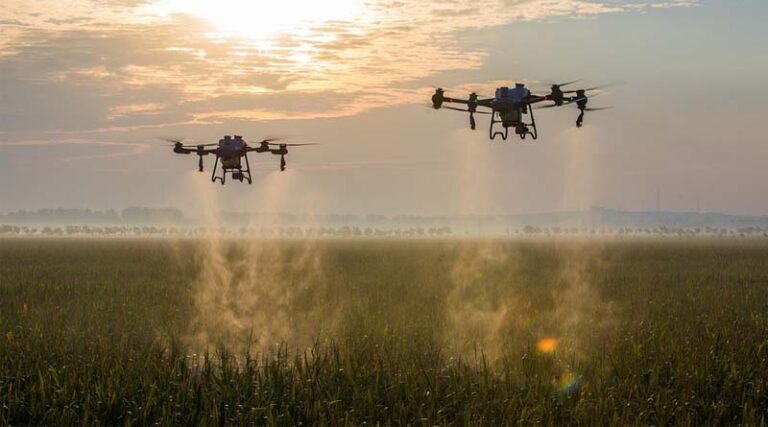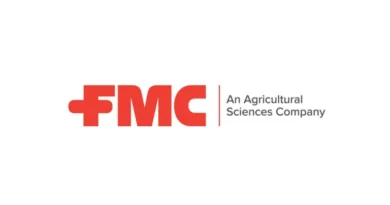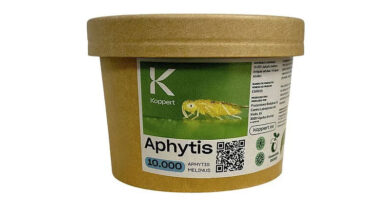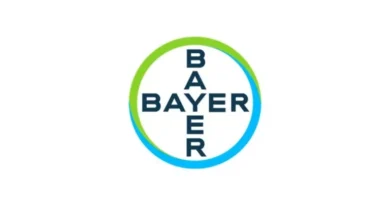
Global Agrochemical Patent Expiries 2021–2028: Key Molecules, Market Impact & Generic Opportunities
By Nimish Gangrade, Editor, Global Agriculture
13 June 2025, New Delhi: As the global agriculture sector continues to evolve with new challenges and technological advancements, one of the most significant changes shaping the industry is the expiry of patents for several blockbuster agrochemical molecules. These expiries, mostly concentrated between 2021 and 2028, have already begun to alter market dynamics and are expected to further impact competition and pricing strategies—especially in high-consumption markets like India. This analysis has been put together by Krishak Jagat’s Global Agriculture as part of its ongoing research on global agri-input market trends.
Early Expiries: 2021 to 2023 – Beginning of a New Competitive Phase
The decade began with Corteva Agriscience’s herbicide Aminopyralid losing its patent protection in 2021. Known for its broad-spectrum weed control across pastures, cereals, fruits, vegetables, and even oil palm, the molecule had a moderate global market size of USD 160 million. This expiry opened avenues for generic players to tap into diverse markets where resistant weed pressure was high.
In 2022, Sumitomo Chemical’s Fenpyrazamine (USD 11 million) and BASF’s high-value Fluxapyroxad (USD 491 million) went off-patent. The latter was especially notable for its widespread usage in cereals, soybean, specialty crops, and turf. Its exit from patent protection marked a major opportunity for generics to make inroads in fungicide-heavy geographies.
By 2023, Bayer’s Bixafen and Syngenta’s Isopyrazam—both fungicides for cereal crops—also saw their patents expire. Syngenta’s Mandipropamid, with applications in potatoes, tomatoes, and tobacco, became open for generic manufacturing. Collectively, these molecules accounted for over USD 500 million in market value, setting the stage for new pricing and product formulations from regional players.
The 2024 Surge: A Watershed Year for Generic Players
The year 2024 proved to be a turning point, with the expiry of patents for an unprecedented number of molecules—fourteen in total. Among them was the most commercially significant: Chlorantraniliprole, jointly developed by Corteva and FMC, with a massive global market footprint of USD 1.75 billion. Its patent expiry reshaped the insecticide market worldwide, especially in Asia, where it is widely used in rice, sugarcane, soybean, cotton, and fruits.
Bayer Crop Science faced a wave of expiries that year. Key molecules like Flubendiamide (USD 507 million), Fluopyram, Penflufen, and Thiencarbazone-methyl transitioned to off-patent status. These cover a wide range of targets including lepidopteran pests, root rots, and broadleaf weeds. Fluopicolide and Fluopyram, in particular, are fungicides essential to fruit and vegetable production and are now poised for strong uptake in generic formulations.
Corteva also saw the expiry of multiple assets, including Penthiopyrad and Pyroxsulam. The latter, used for weed management in cereal crops, had a notable market size of USD 215 million. Ishihara’s Pyriofenone and Valifenalate, though smaller in market size, played crucial roles in mildew control in vineyards and horticulture.
Syngenta’s Sedaxane, used for long-lasting seed protection, and BASF’s Saflufenacil, effective against broadleaf weeds, also exited patent protection in 2024. These molecules offered significant potential in row crop systems, particularly where resistance management was a key concern.
The Mid-Decade Entries: 2026 to 2027
Post-2024, the pace of expiries slows down but remains significant. In 2026, three important molecules are expected to go off-patent. These include Cyantraniliprole, a widely adopted insecticide developed by Corteva, FMC, and Syngenta; Pinoxaden, a selective herbicide from Syngenta valued at USD 421 million; and Sulfoxaflor, used for controlling sucking pests on cotton, cereals, and fruits.
Each of these plays a critical role in integrated pest management systems. Pinoxaden, in particular, has been integral in controlling monocotyledon grass weeds in wheat and barley systems and is widely used in temperate regions. Its generic version could drive increased access in developing countries.
Sulfoxaflor, slated for expiry in 2027, addresses the rising problem of sucking pest outbreaks in cotton and cereals. It represents a USD 190 million market opportunity and will likely attract strong interest from Indian and Chinese manufacturers looking to offer affordable alternatives.
Looking Ahead to 2028: New Entrants Poised for Replication
The final major molecule listed in this wave of expiries is Benzovindiflupyr from Syngenta AG, with a market value of USD 419 million. Scheduled for patent expiry in 2028, it is a potent fungicide used in managing a wide spectrum of diseases such as rust, mildew, blight, and scab in corn, soybean, turf, and ornamental plants.
Its broad efficacy makes it a prime candidate for generic versions in both temperate and tropical agricultural zones. Post-expiry, the competition will likely intensify not just on cost but also on formulation innovations and compatibility with other active ingredients.
| No. | Name of Molecule | Name of Inventor | Market Size (USD Mn, 2019) | Patents Expiry | Usage |
| 1 | Aminopyralid | Corteva Agriscience | 160 | 2021 | Broad spectrum weedicide for pasture, rangeland, oil palm, rubber, F&V, and cereals. |
| 2 | Fenpyrazamine | Sumitomo Chemical | 11 | 2022 | Highly effective against grey cold, stem rot and brown rot in fruits and vegetables |
| 3 | Fluxapyroxad | BASF SE | 491 | 2022 | Broad spectrum fungicide for cereals, soybean, speciality crop and turf. |
| 4 | Bixafen | Bayer Crop Science | 276 | 2023 | Broad spectrum fungicide for cereals. |
| 5 | Isopyrazam | Syngenta AG | 129 | 2023 | Broad spectrum fungicide. Controls a wide spectrum of fungal pathogens including Septoria tritici, Puccinia recondite, and Puccinia striformis on wheat. |
| 6 | Mandipropamid | Syngenta AG | 179 | 2023 | Late Bligh of potato and tomato. Also used in tobacco, F&V and vine. |
| 7 | Chlorantraniliprole | Corteva/FMC | 1750 | 2024 | Chewing insects of soybean, F&V, rice, cotton, maize, pome fruit, sugarcane, potato and cereals. |
| 8 | Flubendiamide | Bayer Crop Science | 507 | 2024 | Mainly effective for controlling lepidopteran pests including resistant strains in rice, cotton, corn, grapes, and other fruits and vegetables. |
| 9 | Fluopicolide | Bayer Crop Science | 45 | 2024 | Fungicide for grapes, potatoes, fruits and vegetables. |
| 10 | Fluopyram | Bayer Crop Science | 87 | 2024 | Used against fungal diseases such as grey mold, powdery mildew, apple scab, Alternaria, Scleroinia, and Molinilia |
| 11 | Penflufen | Bayer Crop Science | 170 | 2024 | Potato: Black scurf, silver scurf, dry rot; Cereals: Root rot, smut and a number of seed borne pathogens. |
| 12 | Penthiopyrad | Corteva Agriscience | 85 | 2024 | It offers strong rooting power that results in stronger, healthier root for higher productivity. |
| 13 | Pyriofenone | Ishihara | 5 | 2024 | Fungicide developed for the control of powdery mildew in cereals and grape vines |
| 14 | Pyroxsulam | Corteva Agriscience | 215 | 2024 | Broad spectrum grass broad leaf weeds of cereals |
| 15 | Sedaxane | Syngenta AG | 108 | 2024 | Long lasting protection against difficult to control seeds, soil and airborne pathogens |
| 16 | Thiencarbazone-methyl | Bayer Crop Science | 155 | 2024 | Herbicide used for selective control of grasses and broad leaf weeds primarily in corn |
| 17 | Valifenalate | Ishihara | 25 | 2024 | Used against mildew in grapes, potatoes and tomatoes. |
| 18 | Saflufenacil | BASF | 225 | 2024 | Broadleaf weeds of soybean, maize, sugarcane, cereals, non-crop and orchards. |
| 19 | Cyantraniliprole | Corteva/FMC/Syngenta | 120 | 2026 | Effective against the larvae stages lepidopteran insects; also on thrips, aphids, and some other chewing pests. |
| 20 | Pinoxaden | Syngenta Ag | 421 | 2026 | Highly selective systemic herbicide used to control monocotyledons grass weeds in such as wild oats, rye grass, black grass in winters and spring wheat, and winter and spring barley. |
| 21 | Sulfoxaflor | Corteva Agriscience | 190 | 2027 | Sucking pest of turn, cotton, soybean and cereals and F&V. |
| 22 | Benzovindiflupyr | Syngenta AG | 419 | 2028 | Controls broad range of fungal diseases – blight, mildew, rust, scab, leaf spot on corn, soybean, ornamental, turf, etc. |
Implications for India and the Global Agrochemical Landscape
India, with its rapidly growing generic agrochemical manufacturing sector, is expected to play a pivotal role in post-patent commercialization. Many of the expired and soon-to-expire molecules—particularly Chlorantraniliprole, Cyantraniliprole, Flubendiamide, Pyroxsulam, and Pinoxaden—are already in high demand among Indian farmers. Their transition to generic status can significantly reduce production costs and improve farmer accessibility.
From a global perspective, this wave of patent expiries offers both opportunities and challenges. While generic players can enter the market and offer lower-cost solutions, multinational corporations may face declining revenues on these legacy products. However, they are likely to counterbalance this by shifting focus to new molecule development and value-added formulations.
The decade between 2021 and 2028 is proving to be a transformative period for the global agrochemical industry. With over 20 key patented molecules having transitioned or set to transition to generic status, the competitive landscape is undergoing a major realignment. For countries like India, this is an unprecedented opportunity to bolster domestic production, reduce input costs, and promote sustainable farming practices by making effective crop protection more accessible and affordable.
Also Read: Bayer Launches New Insecticide ‘Bicota’ for Managing Stem Borers in Paddy
📢 Reach Farmers, Share Your Story, and Grow Your Brand!
Got news to share? A company story to highlight? Looking to launch an impactful advertising campaign? Connect with us at info@krishakjagat.org or nimishgangrade@krishakjagat.org and make your mark!
📢 Connect with 100+ Million Farmers! India’s leading farmers rely on Krishak Jagat’s Hindi website for trusted agriculture news, advisory and insights. Click here to explore!






